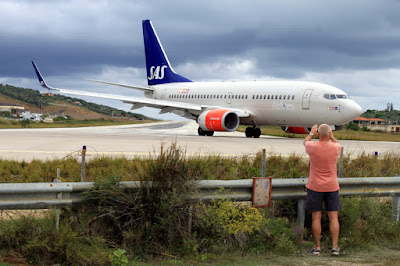The weather man thought that Aurora Borealis, the Northern Lights might be visible overnight. When I looked to north from Oakenclough at 0630 there was a definite luminosity in the sky that I hoped might be the famous display of natural light. When I looked again I realised that it was the glow given off by the streets and buildings of Lancaster and Morecambe some eight or ten miles to the immediate north.
No excuses then, it was time to set the nets for a spot of ringing.
It was slow start that only really came to life after 0800 when visible migration became more evident. I ended at 1130 after a good catch of 42 birds made up of mostly Chaffinch and Goldfinch, the Chaffinches definite migrants, the Goldfinches perhaps less so, or at least in the distances they may have travelled. A couple of the Chaffinch caught proved to be larger males with wing lengths of 91mm, a sign of more northerly birds than our marginally smaller UK residents.
Totals - Chaffinch 20, Goldfinch 12, Goldcrest 4, Coal Tit 2, and singles of Song Thrush, Chiffchaff, Robin and Reed Bunting.
Reed Bunting
Song Thrush
Chaffinch
Goldfinch
Another four new Goldcrests nudged our total for this site close to 50 for the autumn, suggesting that Goldcrests had a breeding season than was more successful than species closer to home.
Goldcrest
There was a significant movement of Chaffinches arriving from the north all morning. They came steadily in handfuls or the low teens. Bearing in mind those I did not see whilst busy with ringing and taking onto account that the twenty ringed is a sample only, I imagine that a total figure after 4 fours of steady Chaffinch movement is somewhere in the low hundreds.
Redwings were not around at first light, only after 0830 and than about 0900/0930 when I counted a total of 60+ circling around in small groups before mainly continuing south. Mistle Thrushes were also evident with up to 15 individuals in two and threes flying over, some landing in the plantation. There was also more than the single Song Thrush which found the nets but less than five.
Two Jays flying overhead were possible migrants as it is a species not seen on site for some months.
There was just a handful of Siskin and Lesser Redpoll this morning, two species which are usually present but seem to have become less numerous in the last two weeks after an early burst of migration in August and September.
"Otherwise" birds - 3 Pied Wagtail, 1 Grey Wagtail, 1 Sparrowhawk.
On the way home over Pilling Moss I stopped to photograph a Kestrel, one of two along the same stretch of road. There was a less accommodating Sparrowhawk which didn’t hang around for a portrait.
Kestrel
A good result for the morning, but with just one observer trying to multitask by birding, ringing and photography it does beg the question of what goes missing on such occasions. It will be interesting and instructive to read other Internet accounts from this morning, especially where coastal birders have been on the lookout for migrants.
Linking today to Eileen's Saturday Blog.
Linking today to Eileen's Saturday Blog.


















































































